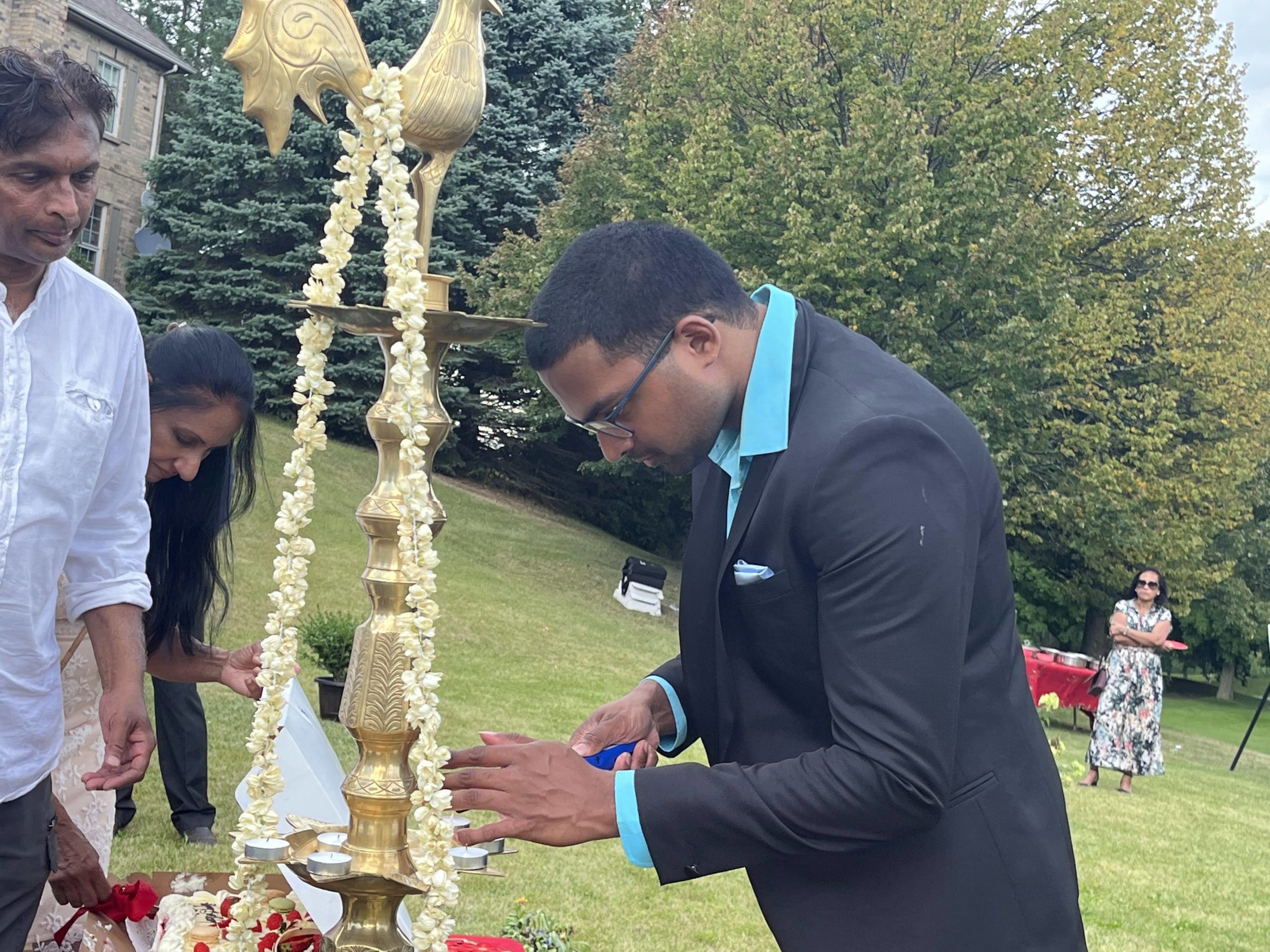An exhibition of paintings by world-renowned artist Tilake Abeysinghe was held in Port Perry, Ontario, to celebrate his 93rd birthday on August 18.
Abeysinghe, one of the most well-known artists in Sri Lanka, honed his skills in Italy under the world-famous painter Dominico Contatre and learnt sculpture under the tutelage of Mariano Marini.
Abeysinghe was born in Karathota near Matara and studied at Kandy St. Sylvester College after his primary education at Rahula College Matara. After his education, he joined the government survey department as a draughtsman and later joined the government college of fine arts as he had extraordinary skills with the brush.








He became known in Colombo art circles as he won an award after designing a stamp to celebrate the Buddha Jayanthi in 1956. After winning a postgraduate scholarship to study art, he had a chance to enrich his skills under the two Italian masters. He had the first exhibition of his paintings in Milan in 1967, and so far, Abeysinghe has held 70 one-man shows in Europe, South and North Americas and Asia. In 1984 he was honoured with the title of Chevalier of the Order of Merit by Italy for his services to arts and the Sri Lankan Arts Council decorated him with the honour Kalakirthi to recognize his services to the nation.
His major works include a 25-foot high sculptor at the Italian embassy, an 85-foot mural at the Standard Chartered Bank in Colombo, a mural in bas-relief at the American Express Bank in Colombo, a bust of Sri Jawaharlal Nehru at the Indian High Commission in Colombo and a 12-foot sculptured monument in the Central Bank in Colombo.
Known as an independent artist unbending to commercialism, Abeysinghe follows his own style without any influence of his gurus, reflecting his creativity and individuality.
In a media interview in 2006 he said ‘I do not pre-meditate about what I am going to paint; it just flows onto the canvas with my own feelings.’ International art critic has described him as essentially a postmodernist who has evolved a poetic language of the human form in his canvases, “which takes on many aspects; the spiritual and the nude, figure prominently portraying his deep sense of appreciation to life.”

